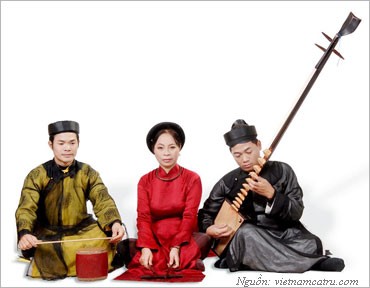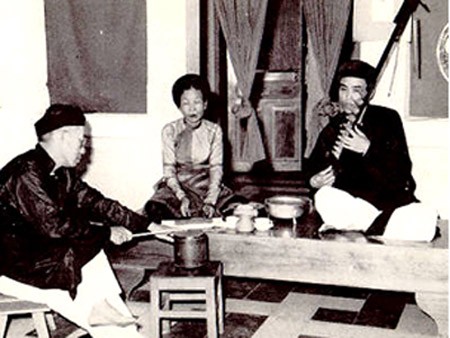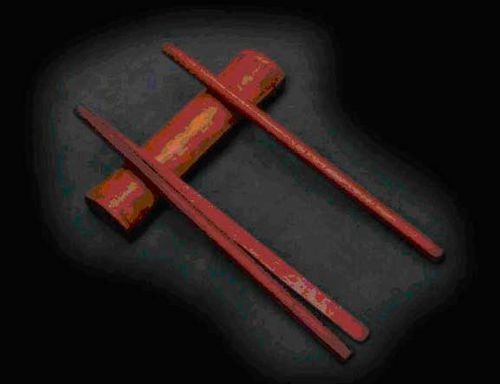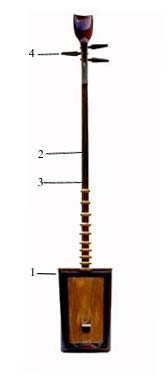(VOVworld) - Hello and welcome to the Sunday show on the Voice of Vietnam, where we talk about Vietnam, its land and culture. I’m Ngoc Huyen, hosting the show for today and I hope you enjoy it.
In October, 2009, Vietnamese ceremonial singing, or Ca trù, was officially recognized by UNESCO as a world intangible cultural heritage in need of preservation. Ca tru is one of the most uniquely Vietnamese genres of folk music in the Vietnamese treasury of traditional music. Its origin and history remain controversial today.
Ceremonial singing or Ca trù appeared in 11th century, but it wasn’t until the 13th century, during the Ly Dynasty, that it was officially recognized as a form of entertainment for the royal court. There are different stories and theories about ca trù's beginnings. One story states that a woman named Ả Đào created the genre, by charming the enemy with her voice (thus explaining one of the genre's alternate names: Hát ả Đào or Ả Đào singing. Another theory points to a woman named Đào Thị, a talented musician who was a favorite of the Ly Dynasty imperial court. This story says that since the time of Đào Thị, in admiration of her, women employed as professional singers (such as ca trù singers) have been called Đào nương ("nương" heretranslates roughly as "maiden" or "lady"), although the term is no longer widely used in modern Vietnam.
 |
The 15th century marked Ca trù’s heyday as a musical genre. Depending on the locale, Ca tru singing is referred to as hát ả đào, hát cửa đình, hát cửa quyền, hát cô đầu, hát nhà tơ, hát nhà trò or hát ca công. Ca trù ranks 20th among the world’s most unique vocal methods, after hát ngậm, a vocal method that allows the singer to close their mouth while singing but still involves vocal articulation, which is in contrast to opera singing, where the singer’s mouth must open wider when singing high notes. In the 15th century, Ca trù spread throughout northern Vietnam. Ca tru artists might be called to celebrate a son's birth, or the signing of a contract. Ca tru singers were outside the caste system, so they could entertain the noblest clients. Professor Thao Giang, Deputy Director of the Vietnam Musicians Association, has studied on Vietnamese folk music for 40 years. He says Ca means ‘singing’, trù means ‘bonus’ or ‘compliments’. Giang told VOV:
In my opinion, the way we understand Ca tru’s origin is incorrect. After it got the name Ca tru, it became commercially viable. Before the 15th century, it was considered merely folk music without any commercial value.
Ca trù is rooted in folk music, so it is a synthesis of art involving a complex blend of poetry, music, and sometimes even dancing.
Being well-known in the Northern provinces, especially the capital of Thang Long Hanoi, Ca trù now has appeared in 14 provinces along the country, including the Northern provinces, the central provinces and even in Ho Chi Minh city. The combination of words, singing voice and traditional music instruments in Ca tru requires the audience’s comprehensive knowledge of Vietnamese history, poetry, literature and music. This may be the reason why Ca tru is not favored by the youth and is gradually losing its fans given the changes in contemporary life and the development of the more modern forms of entertainment. Professor Thao Giang explains about the darkest period of Catru, the early 20th century when Ca tru was called Hát nhà tơ, to be sung in brothels and the reason, which was why it was dying out in this period:
Ca tru’s purpose was corrupted by changes over time. We all know that under the period of French colonial, we did not pay sufficient attention to preserving and restoring this artform. We only considered Ca tru to be a form of entertainment synonymous with drugs.
We have given you a snapshot of the history of Ca trù’s development, a type of ancient ceremonial singing which has been recognized by UNESCO as a world intangible cultural heritage. Let’s now talk more about Ca tru’s instruments and its vocal style.
The most common form of Ca trù involves only three performers: the female vocalist, a lute player and a spectator (who also takes part in the performance). Sometimes dance is also performed at the same time.

Three performers in Ca trù
|
The female singer provides the vocals whilst playing her phach- two wooden sticks beaten together on a small bamboo bar, which serves as the percussion. Unlike a normal stick, phach is split into two parts to create the sounds of the clicks and clacks. Phach is considered the singer’s second voice. It took at least 6 months to learn phach.
 |
| Phách |
The singer or Đào nương, is accompanied by a man who plays the đàn đáy, or 3 string plucked lute made from sycamore wood which is used exclusively for Ca trù. Thanks to the long neck, this musical instrument can provide a gravelly, deep, and mysterious sound. The final participant is the spectator, who is often a scholar or connoisseur of the art and who strikes a trống chầu, or praise drum, in praise or disapproval of the singer's performance, usually with every passage of the song. The praise drum is made from buffalo skin and jackfruit wood, mounted on a stick, creating its typical sound.
 |
| Trống chầu |
The way in which artist strikes the drum shows whether he approves or disapproves of the performance, but he always does it according to the beat provided by the vocalists' phách percussion. In order to master this song form, a Đào nương has to practice from 3 to 10 years. Le Thị Bạch Vân is a Ca tru’s people's artist, Chairwoman of the Hanoi Catru Club, one of the two major Catru clubs in Hanoi, and is also a famous Dao nuong belonging to the 2nd generation of artisans. She said:
Ca trù is an academic art, which has been passed down through many generations. In Vietnamese music history, Ca Trù was favored through many Dynastys and especially among the Vietnamese intellectuals.

Đàn nguyệt
|
Unlike modern music, Ca trù has its own system of music notation and space, and is applied by the phach. Đào nương or the Ca trù’s singer, needs to learn how to use the phach properly before even learning the vocal method. Another unique feature of Ca tru is that its lyrics are poems, and could fit any type of poem, long or short. In ancient times, officials or poets would invite the Đào nương to come to perform at home and ask the Ca tru band to use their poems for the lyrics. They could also invite friends to enjoy the Dao nuong’s voice and comment on the melody. It takes a beginner 3 to 10 year to master the vocal and phach techniques.
The most difficult part of Ca tru is the singing and using the phach, to accompany the singing, many people can mimic some Ca tru’s tunes but they can’t fake knowledge of how to use phach. The phach is the backbone of the singer.
Ca tru has become more well-known since it was recognized as one of the items of world intangible cultural heritage. Not only the young Vietnamese but also many foreigners are attracted to the unique rhythms and singing method of Ca tru.
You’ve been listening to the Sunday Show on the Voice of Vietnam. We are here every Sunday to tell you more about Vietnam. If you have any comments or suggestions about the program, send your letters to:
The English Section, Overseas Service, Voice of Vietnam, 45 Ba Trieu Street, Hanoi, Vietnam. Or you can email us at englishsection@vov.org.vn. That’s all we have for today, thanks for listening. Goodbye